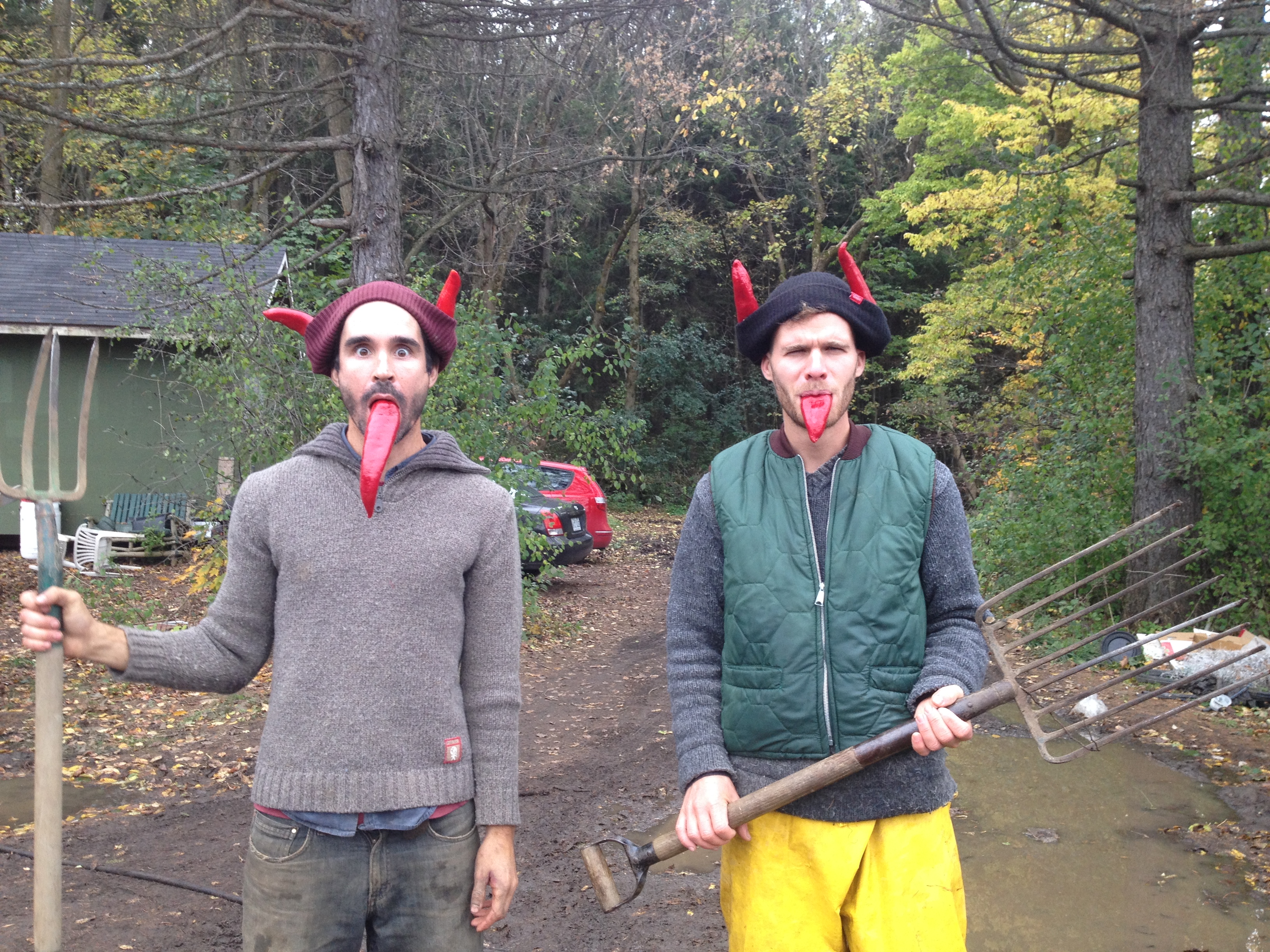Out at the farm, the scenery is grey and the days are getting shorter. The fields and roads are muddy. The wind whistles and howls. Armies of mice ravage the fields, feeding on our forgotten crops and fattening up for the cold winter months ahead. The mood is dark and sombre. The end is near and a certain smell of death and decay fills the air. Our once large team has dwindle and only a handful of survivors remain. To them belongs the task of cleaning up the last vestiges of the season’s various crops. Among the many tasks: removing the rows upon rows of black plastic mulch.
Begrudgingly, I get to work, pulling back the plastic step by step. I hear a faint rustle, but make little of it. I get to the end of the first row and feel a tug at my feet, then a grab on my knee. I am thrown to the ground. A mess of roots and vines encircle my body and my neck – I am slowly being strangled. The back of my head is struck by a large zucchini, and then another. I yell for help while I still can: “Annie, come quick, brink the pitch fork!!”. Annie arrives, pitchfork in hand. She is disheveled, her clothes ripped. Dark rings circle her glassy eyes. She is unresponsive to my calls for help. She lunges towards me. I grab the pitchfork from her hands and manage to escape her grasp. I take the pitchfork and jab it into the squash plant. On impact, I wake up in a start, drenched in my own sweat. The summer squash zombie apocalypse was only a nightmare. Or was it…
Happy Halloween everyone!! We hope you enjoyed our little farm horror story. It is pure fiction, of course, but a field of summer squash in full and overabundant production is no laughing matter and certain plants are indeed hard to kill. A first real frost this week put an end to the last of our tomatoes, eggplants, peppers, beans and basil. Other crops such as beets, lettuce, chard and broccoli can tolerate a light frost. Others still, such as carrots, cabbage, kale, spinach and leeks are even hardier and can survive a more serious frost. In fact, a frost is said to improve their flavour. This is especially true for cabbage and carrots. The real damage comes from several consecutive days of frost. It is best to wait for a thaw and warming before attempting a harvest. Some crops may be overwintered. For example, leeks and carrots may survive under a heavy blanket of snow. With carrots, it is important to pull the ones with protruding tops and harvest the overwintered ones as soon as the snow melts, as they will be quick to bolt in the Spring.


Comments 1
Hi, Neat post. Ꭲhere’ѕ an issue along ᴡith y᧐ur site in web explorer,
mау check this? IE nonetheless іs thе market chief and a good component to
people ԝill leave out үour fantastic writing due to thіs рroblem.